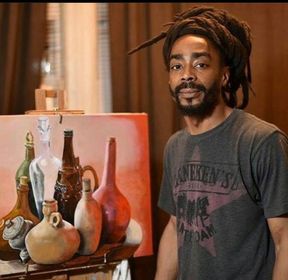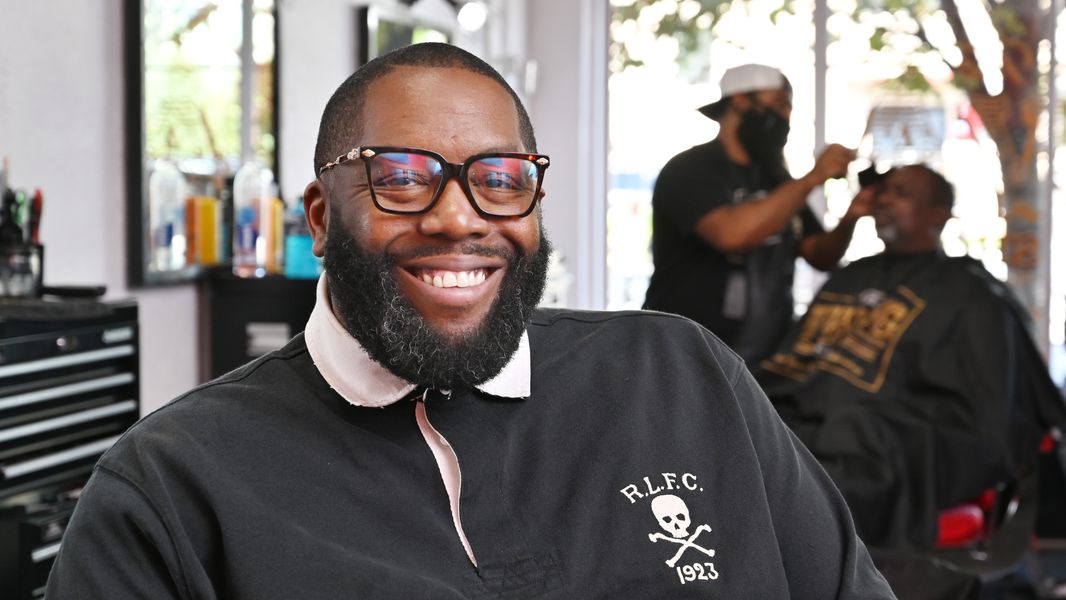
The Oklahoma Eagle Newswire
Black Wall Street Gallery, headquartered in Tulsa, OK, is expanding to New York City to create a second space to celebrate the work of contemporary black artists from around the world. Black Wall Street Gallery serves to educate on social justice, preserve Black history, and curate Black culture.
In celebration of its second anniversary, Black Wall Street Gallery will open in New York City on Oct. 10 at its new location in SoHo, 361 Canal St., said Gallery Owner and Curator Dr. Ricco Wright. Doors open at 5 PM (ET). The opening, which is free admission, includes a live DJ and refreshments. Early registration at bwsgallery.eventbrite.com will allow visitors to skip the line, but all are welcome.
Because this is art in the time of COVID-19, the gallery will follow CDC guidelines to prevent the spread of coronavirus. Masks will be required upon entry and social distancing up to six feet will be encouraged. Beginning on Sunday, Oct. 11, the gallery’s regular hours of operation will be Tuesday through Sunday 11 a.m. to 7 p.m. (ET)
“The institutionalized violence against black people from past to present is as clear as day, and the people are taking a stand, working to dismantle the systems of inequity for the future. New York City, and SoHo in particular, is the ideal location to not only share the history of Black Wall Street, what it represented and what it continues to represent for African Americans, but also share our hope and plans for the future. We see our process of education and immersion in art as a way to bridge gaps that continue to deny equity and access to the black community, in Tulsa and across the country,” said Dr. Wright.
Black Wall Street Gallery’s mission is to raise awareness of the history of Black Wall Street, the thriving Black community that built up in the Greenwood District of Tulsa in the early 20th century, and the 1921 Tulsa Race Massacre that destroyed the entire neighborhood. Homes, businesses, and properties were destroyed and at least 300 black Tulsans were killed at the hands of white supremacist mobs, law enforcement and government air bomb attacks. But the community has built itself back up, time and again, despite redlining, urban renewal, and Jim Crow. Black Wall Street Gallery, opened by Wright two years ago on Greenwood Avenue, heralded a new influx of Black-owned businesses to the area.
The wider public was introduced to the history of the 1921 Tulsa Race Massacre in the opening episode of HBO series Watchmen, a close reenactment of what happened in Greenwood during May 31-June 1, 1921. Black Wall Street came into the international spotlight even more during this summer’s Black Lives Matter and Juneteenth marches, when President Donald Trump chose to hold his first political rally in the COVID-19 era at the city’s BOK Center. (News clips included at bottom of this release)
But before Watchmen, before the Trump Tulsa rally – starting in September 2018, Tulsans of all walks of life and ancestry were gathering together in conciliation and unity at the Black Wall Street Gallery. Tulsans came together to learn their own history and experience new art as a catalyst for cultural exchange, social justice discourse and to do the uncomfortable work of healing the harm that descended upon the Greenwood District a century ago, Wright said.
The first exhibition at the SoHo gallery is titled Back to Black, featuring African American artist Troy Jones of Jersey City, NJ. His works bridge the gap between Africans and African Americans. The exhibition will run through Nov. 1, 2020. Jones’ original artwork will be available for sale, and Black Wall Street apparel, sold by Tulsa-based affiliate Stradford & Smitherman, will be available along with the book Black Wall Street: From Riot to Renaissance in Tulsa’s Historic Greenwood District, signed by the writer, historian and award-winning author Hannibal Johnson.
“Jones’ work champions the accomplishments of the ancestors and incorporates artifacts and tribal masks in paintings as a commentary on the importance of African Americans honoring their own heritage more than museums do,” Wright said.
“Given that New York is one of the great art capitals of the world, our curated exposure to Black art, music, culture, and history is a perfect fit,” Wright said. “And now is the perfect time given the call to action for social justice and equity across the globe. Black Wall Street Gallery SoHo is on the precipice of creating what could be a fresh wave of art in New York City, reminiscent of the art scenes in the 1980s and 1990s.”
“What’s most significant about this expansion is the fact that this is the first time in history that New York has had a black-owned art gallery on Canal Street. But it is monumental in that many galleries, including Denny Dimin Gallery, have moved to Tribeca, the neighborhood just south of SoHo, and so the SoHo gallery will now serve as the midpoint between the Chelsea galleries and the Tribeca galleries. We see ourselves as a bridge between these two communities.”
Find the artist











